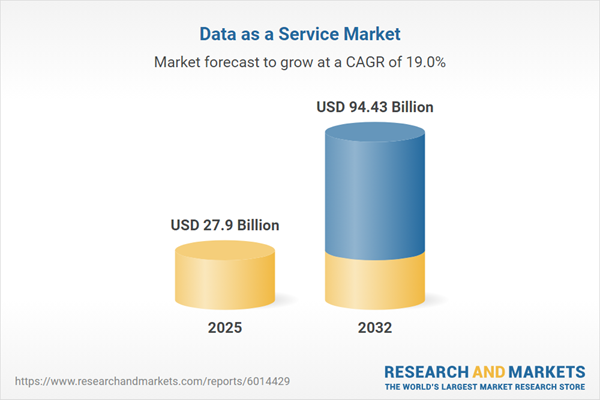Speak directly to the analyst to clarify any post sales queries you may have.
The composite materials market is a key driver of modernization in industrial manufacturing, enabling senior decision-makers to deliver greater operational agility, technical performance, and resilience. In a sector shaped by evolving regulatory demands and globalized supply networks, executives require targeted insights to guide strategy and secure long-term competitive advantage.
Composite Materials Market Snapshot
Adoption of composite materials is accelerating across industries such as aerospace, automotive, and renewable energy, reflecting a strong focus on lightweight construction, material longevity, and advanced engineering. Manufacturers are leveraging contemporary forming and assembly processes to push beyond established limitations. The current market landscape asks organizations to integrate their value chains and adapt production frameworks to fast-changing functional and regulatory requirements. This rapid evolution drives stakeholders to refine logistics, realign supply chains, and address mounting expectations around sustainability, while meeting the needs of increasingly varied end-use applications.
Scope & Segmentation of the Composite Materials Market
- End Use Industries: Aerospace and defense companies deploy composites for performance and weight reduction objectives; automotive and transportation sectors rely on these materials to enhance safety standards and advance electric mobility; industrial equipment, electronics, and medical sectors integrate composites to satisfy distinct technical and operational imperatives; renewable energy solutions use composite components to maximize system durability and efficiency in wind, solar, and related applications.
- Material Types: Coverage includes aramid fibers (Kevlar, Twaron), carbon fibers from pan and pitch, glass fibers such as C-glass, E-glass, and S-glass, and expanding use of natural fibers like flax, hemp, and jute as part of broader sustainability goals.
- Polymer Types: Includes thermoplastic composites (PA, PEEK, PEI, PP) valued for potential recyclability, alongside thermoset composites (epoxy, phenolic, polyester, vinyl ester) selected for consistent performance in demanding settings.
- Processing Technologies: Encompasses compression molding, filament winding, injection molding, pultrusion, and resin transfer molding, each supporting application-specific manufacturing precision and scale.
- Geographical Coverage: In-depth analysis of the Americas, EMEA, and Asia-Pacific, with attention to regulatory and consumer dynamics in China, India, Japan, Southeast Asia, and Australia; regional divergence shapes both production and investment choices.
- Company Analysis: The report includes review of leading players such as Dun & Bradstreet Holdings, Experian, TransUnion, Equifax, Nielsen, Oracle, SAP, IBM, Acxiom, and Thomson Reuters, exploring strategic contributions and value chain roles across the composite materials sector.
Key Takeaways for Senior Leaders
- Composite material adoption enables organizations in transportation, infrastructure, and energy to meet increasingly stringent regulatory and technical requirements, paving the way for ongoing process and product evolution.
- Investment in advanced molding and infusion technologies streamlines production processes, improves throughput, and ensures durability standards are consistently achieved at scale.
- Aerospace manufacturers deploy composites to achieve significant component weight reduction; automotive firms prioritize these materials to set higher safety benchmarks and streamline internal resource use.
- Shifting market preferences toward recyclable thermoplastic composites and bio-based fiber types help participants proactively address regulatory and end-customer sustainability concerns.
- Firms that prioritize technology upgrades, invest in resilient supply chain structures, and implement long-term product lifecycle strategies are better prepared to sustain growth and manage sector transitions.
Tariff Impact on Composite Materials Supply Chains
Recent trade policy changes in the U.S. are reshaping composite material sourcing priorities. Many buyers are evaluating domestic or nearshore options to control price volatility and reduce exposure to global disruptions. This landscape prompts manufacturers to strengthen supply chain resilience, reconfigure sourcing strategies, and actively mitigate risks linked to policy uncertainty and market fluctuations.
Methodology & Data Sources
This report draws on interviews with operations specialists and supply chain leaders, supported by industry publications and targeted technical analysis. Validation from materials science and engineering experts ensures findings are actionable and highly relevant to executive priorities in the composite materials market.
Why This Composite Materials Market Report Matters
- The analysis empowers decision-makers to align corporate strategies with regulatory shifts, new demand drivers, and cutting-edge technology trends.
- It guides informed risk assessment and resource planning in a context defined by sustainability targets, innovation requirements, and rapid sector evolution.
- Senior executives receive practical insights for optimizing regional investments and building resilient, adaptive supply chains for future growth.
Conclusion
This report equips leaders with the comprehensive knowledge needed to navigate market transitions, implement effective responses, and foster ongoing innovation throughout the transformation of the composite materials sector.
Additional Product Information:
- Purchase of this report includes 1 year online access with quarterly updates.
- This report can be updated on request. Please contact our Customer Experience team using the Ask a Question widget on our website.
Table of Contents
3. Executive Summary
4. Market Overview
7. Cumulative Impact of Artificial Intelligence 2025
Companies Mentioned
The companies profiled in this Data as a Service market report include:- Dun & Bradstreet Holdings, Inc.
- Experian PLC
- TransUnion LLC
- Equifax Inc.
- Nielsen Holdings PLC
- Oracle Corporation
- SAP SE
- International Business Machines Corporation
- Acxiom LLC
- Thomson Reuters Corporation
Table Information
| Report Attribute | Details |
|---|---|
| No. of Pages | 180 |
| Published | November 2025 |
| Forecast Period | 2025 - 2032 |
| Estimated Market Value ( USD | $ 27.9 Billion |
| Forecasted Market Value ( USD | $ 94.43 Billion |
| Compound Annual Growth Rate | 19.0% |
| Regions Covered | Global |
| No. of Companies Mentioned | 11 |









